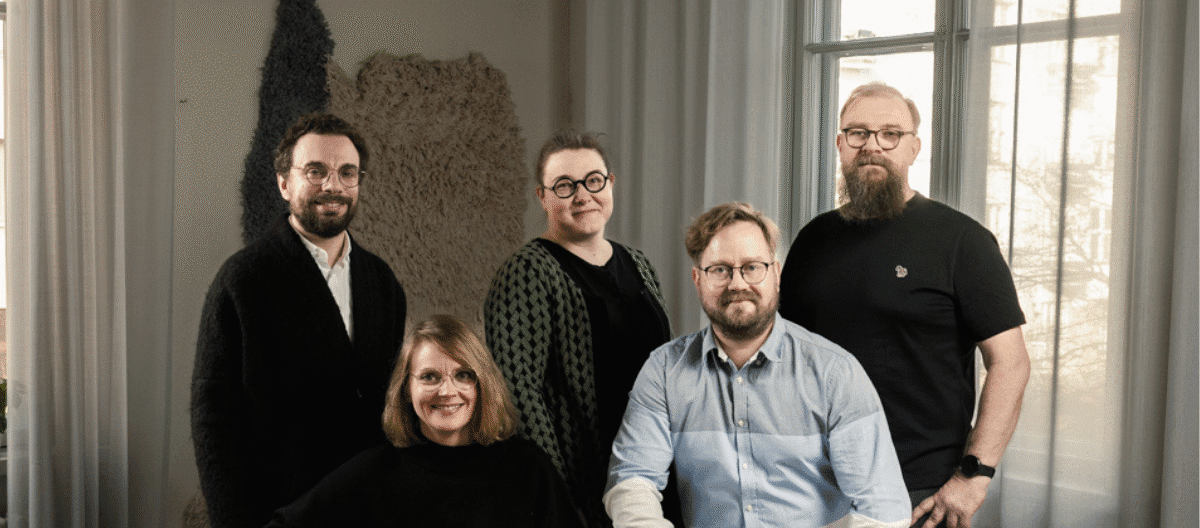The 2025 Blue Globe Award recognizes five pioneers in sustainable construction who are developing new solutions to the challenges of housing, the built environment, and circularity in the construction sector. The total award amount is €100,000, shared equally among the recipients.
This year’s award goes to Satu Huuhka, Professor of Renovation at Tampere University; architects Kristiina Kuusiluoma and Martino de Rossi, founders of Collaboratorio and Luonnonbetoni Oy; and Mikko Piitulainen and Petri Salmi, founders of Spolia Oy.
According to the European Environment Agency’s October 2024 report (EEA 2024), Europe’s environmental conditions are deteriorating, and most EU environmental and climate targets are at risk of not being met. The report also notes that Finland’s ecological footprint is significant, its material consumption among the highest in Europe, and its waste generation excessive. Construction material flows—especially cement, steel, and aluminum—play a central role in the nature and climate crisis.
The construction and real estate sector is the world’s largest consumer of raw materials, responsible for approximately 35% of global greenhouse gas emissions and 30% of all waste (UNEP 2024). Within the EU, the building sector is the most environmentally burdensome, accounting for more than 30% of the Union’s total environmental footprint, 35% of its waste, and 5–12% of its greenhouse gas emissions (EEA 2024).
With the 2025 Blue Globe Award, the organizers aim to highlight pioneers developing innovative solutions to the sustainability challenges in housing and the built environment. The award recognizes five changemakers who demonstrate that transformation is already possible—through research, design, and circular economy practices.
“Construction is one of the key sectors accelerating climate change. At the same time, renovation and new, more sustainable solutions offer major opportunities to mitigate the ecological crisis. We need bold actions that move sustainable construction from words to deeds. The Blue Globe Award honors precisely these kinds of pioneers,” says Henna Hakkarainen, Executive Director of the TAH Foundation.
Renovation and material choices determine emissions
Professor Satu Huuhka of Tampere University has long studied how renovating and reusing existing buildings can reduce emissions more effectively than demolition and new construction.
“Repairing and developing existing buildings—such as expanding or repurposing them—is a more climate-friendly strategy than even the most energy-efficient demolition-based new construction,” Huuhka says.
According to her, immediate action is necessary: “The IPCC calls for measures that deliver rapid emission reductions. Extending the lifespan of existing buildings is one of the most practical and widely accessible ways to do that. It also buys time to develop low-emission building materials.”
Huuhka’s research group also studies the reuse of components recovered from demolished buildings.
Architects reimagine materials and ethics in construction
Architects Kristiina Kuusiluoma and Martino de Rossi work to reduce the construction sector’s climate impact while challenging conventional design and building practices. Their philosophy centers on viewing buildings not as disposable products but as long-lasting parts of an ecosystem.
“Our design ethics are rooted in respect and honesty toward materials. While mainstream construction tends to conceal, standardize, and polish, we seek what is raw, imperfect, and authentic,” Kuusiluoma and de Rossi explain.
They argue that natural materials and reused structures introduce new ethical and aesthetic dimensions into construction: “They are healthy, reusable, and low-energy—but above all, they bring softness, quietness, and humanity into our living environments.”
Circular economy requires a new financial model
Spolia Ltd. founders Mikko Piitulainen and Petri Salmi advance circular practices in construction but emphasize that genuine transformation must also reshape the underlying economic models.
“The construction sector must shift away from the linear economy and adopt circular models. Instead of optimizing for the lowest price and fastest timeline, we need new mechanisms and metrics that preserve natural value,” Salmi and Piitulainen state.
They argue that circularity should become a competitive advantage: “The strategies already exist—now it’s time to move from pilot projects to real, large-scale implementation across all areas of construction.”

